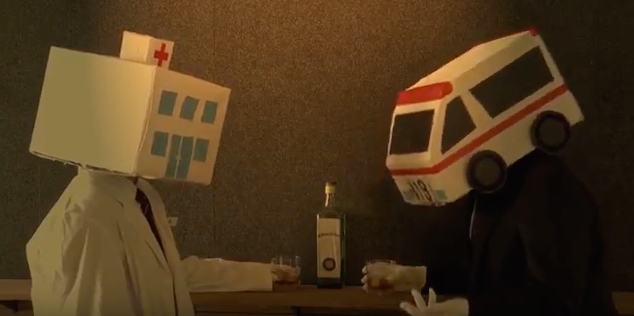LGBT
Video Origin: Official YouTube Channel of Doshisha Women’s College of Liberal Arts
Link: https://www.youtube.com/watch?v=ztaF5l_qHtk&authuser=1
Translators’ Names: Cindy and Nene
The Japanese script and the English translation
四足歩行のお友達
A friend walks on hands and legs
あの子の手紙を象形文字
A girl writes in ancient text
リーゼントの女子高生
A schoolgirl has ducktail hair
ラッパー志望のおじいちゃん
A grandpa wants to be a rapper
中二病の22歳
A man acts like a middle school boy
スルメで生きてるお姉さん
A woman lives off eating dried squid
あの子のパパは、専業主夫
A father is a stay-at-home dad
ゴスロリ大好き男の子
A boy really likes Goth-Lolita trends
私の好きな人は
The person I like…
女の子!
…Is a girl!
偏見がなくなれば、
もっと楽しくなる
If there is less prejudice,
the world will become more fun.
About the video (the gist of the video)
The video hopes to bring about an image of a world without prejudice. The video is about representing different types of people and their unique interests. There are people from a variety of ages, have different careers, and go against common gender stereotypes.
Intended audience
Although it is easier for younger generations to get the point because the video contains words created for popular culture images, Japanese people of all ages are the intended audience. This video could encourage Japanese people to be more open-minded and accepting of other people.
Challenges when translating the video clip, solutions and the rationales
There were two things we had trouble in translating the video clip. The first one was choosing how to translate the subjects in English. For example, “she/he” or “a girl…” etc. Each person’s unique identity is such a key part to the video, so we wanted to make sure that we honored all the work that went into creating these characters’ backgrounds. At first, we played around with using he/him and she/her, but then we specified the subjects to “A girl that X” and “A man that Y.” This helped with overall flow and organization with the translation.
The second one was trying to preserve the rhythm (13 syllables per sentence) of the original Japanese in some way. All of our English translations that with “A [subject name, e.g. boy, girl] to keep a consistent way to start a sentence. There are a total of 9 people that are showcased, so we decided to have similar syllables for people in groups of three. The first three people are 7 syllables, the next three people are 9 syllables, and the last three people are 8 syllables. The syllable numbers were decided after we were satisfied with our translation.
Where the most creativity was applied
We applied the most creativity in translating words like 中二病 and 専業主夫. We had the option to just keep it as romaji, but decided against that because we do not want to assume our audience is that familiar with Japanese terms like those. For 中二病 we had the options of middle schooler and eighth-grader, but for fitting the rhythm we translated it into middle school boy. For 専業主夫 we chose to translate it to stay-at-home dad because it adds a lighter tone to the video. Also, for words like お姉さん, since there is no such concept in English (sister would be indicating someone’s sister), we decided to translate it into just “woman”.
Advice for students who are interested in translating videos
Rather than direct translating, think more about cultural differences and how to weaken these gaps among different cultures. Also, it is important to carefully consider the target audience. This is because concepts that are easy to understand in one culture might be hard to understand in another.
Overall experience and thoughts on translation
After going through several drafts of our translation, we’re both satisfied with the final result. Every word and overall rhythm has been deliberately thought through and reconsidered over and over again. We think we put a lot of thought into the flow and organization of our sentences, and overall the translation seems to send the fun and positive message intended by the original creators. We enjoyed the discussion of LGBT representation in America compared to Japan as well. That gave us more context on why this video that positively showcases so many different people would be especially important in Japan.
How interviewing the creators influenced the translation process? How did you reflect their comments when revising your draft?
Interviewing the creators was very helpful in the translation process. It ensured that our translation satisfies the intentions of the video creators. Once we were able to talk to the creators, we had a better understanding of the kind of message they wanted to send through the video. The creators told us to focus more on representing the various types of people in the lighthearted and fun way. So, while we were very worried about how we would attribute the rhythm of the original audio in our translation, we ultimately did not make additional changes to the rhythm in our translation because we wanted to focus more on the message.
The overall tone of the video is very fun and positive, which we learned was intentional. The creators mentioned explicitly that they wanted the translation to include a fun feeling. We updated some of our translations with this in mind. For example, at first, we translated the ending as “If there is less prejudice, the world will be a better place.” However, for our final translation, we decided to change it to “the world will become more fun” so that we emphasized the creator’s message.




1 thought on “LGBT”